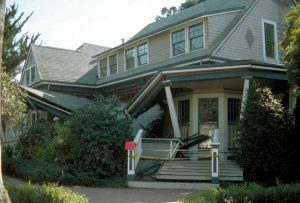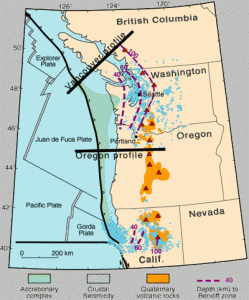 As part of my continuing education I attended a class this morning put on by Zach Smith of Earthquake Tech and Gemmell Construction. Living on the West coast earthquakes are something most of us are aware of. The large quakes in California are recent enough to be remembered by most of us. The 2011 quake and Tsunami in Japan directly affected our coast line (and still does with garbage washing ashore), but for the most part it seems far away and not directly important to our lives. That changed with the publication of a New Yorker article on July 20, 2015 (“The Really Big One” by Kathryn Schulz). It brought front and center the issue that the Pacific Northwest is grossly under prepared for a major earthquake.
As part of my continuing education I attended a class this morning put on by Zach Smith of Earthquake Tech and Gemmell Construction. Living on the West coast earthquakes are something most of us are aware of. The large quakes in California are recent enough to be remembered by most of us. The 2011 quake and Tsunami in Japan directly affected our coast line (and still does with garbage washing ashore), but for the most part it seems far away and not directly important to our lives. That changed with the publication of a New Yorker article on July 20, 2015 (“The Really Big One” by Kathryn Schulz). It brought front and center the issue that the Pacific Northwest is grossly under prepared for a major earthquake.
Some back ground is needed here. There have been 41 significant quakes (we are talking huge, like 9.0) that have happened in the Cascadia Subduction Zone off of the Oregon Coast in the last 10,000 years. The major fault in this zone is the San Juan de Fuca plate which runs from Northern California to Vancouver Island. The average occurance is every 243 years. The last quake was 9.0 on January 26, 1700. So we are now 316 years into a 243 year cycle. Of course these quakes don’t occur on a specific time schedule. This is an average. Some quakes have been many hundreds of years apart and some less than a hundred. When the next quake will occur is a complete unknown. What is known is that it will happen, we just don’t know when.
 So, we know it will come, but what should we do about it? There are some really basic steps that are promoted as earthquake preparedness:
So, we know it will come, but what should we do about it? There are some really basic steps that are promoted as earthquake preparedness:
* Seismically retrofit your house if it is older than about 1980. If it was built since 1980 you should still have it examined to see if there is anything more that you can do. Retrofitting should include strapping your house to it’s foundation, strapping the water heater to brace it against a secure part of the house, brace your chimney, at a minimum put a shut-off wrench next to your gas meter, or better yet, install an automatic shut off valve that will engage as soon as it detects that the house is moving.
* Get earthquake insurance. Earthquake damage is not covered in standard home insurance policies. It is a rider to the policy and must be purchased separately.
* Have a supply of water that will last for enough time to provide 1 gallon of water per day for each person in the house. Different experts suggest different times to expect utilities to be down, a few days or a few weeks, store what you can manage.
* Have a supply of non-perishable food
* Have earthquake preparedness kits in your home, your car, and your office. Don’t forget supplies for your pets.
 I think the big question is how much does it cost to retrofit a house. I was surprised this morning to learn that on average it runs $2000-$8000 for homes built from the turn of the Century to the 1970’s. The cost is dependent upon how big the house is and the condition of the foundation. If the house has a bad foundation (Zach referred to brick foundations a “standing rubble”) then the cost goes up significantly in the range of $50,000-$200,000. I felt encouraged that the average house can be done for under 10K.
I think the big question is how much does it cost to retrofit a house. I was surprised this morning to learn that on average it runs $2000-$8000 for homes built from the turn of the Century to the 1970’s. The cost is dependent upon how big the house is and the condition of the foundation. If the house has a bad foundation (Zach referred to brick foundations a “standing rubble”) then the cost goes up significantly in the range of $50,000-$200,000. I felt encouraged that the average house can be done for under 10K.
I was extremely impressed with Zach’s presentation this morning. If your home is within the metro area he will come and give you an estimate at no charge. For information on Earthquake Tech click here.
I also want to give a shout out to Jay Kushner of Seismic Technologies. I have been referring clients to Jay for years. He is knowledgeable and a tremendous resource for assessment of the seismic preparedness of homes. For his information click here.
Let’s hope we never have The Big One happens in our life times, but let’s also be aware and pro-active so that if it does, we have the best chances possible for our homes and for our families.
Dianne
